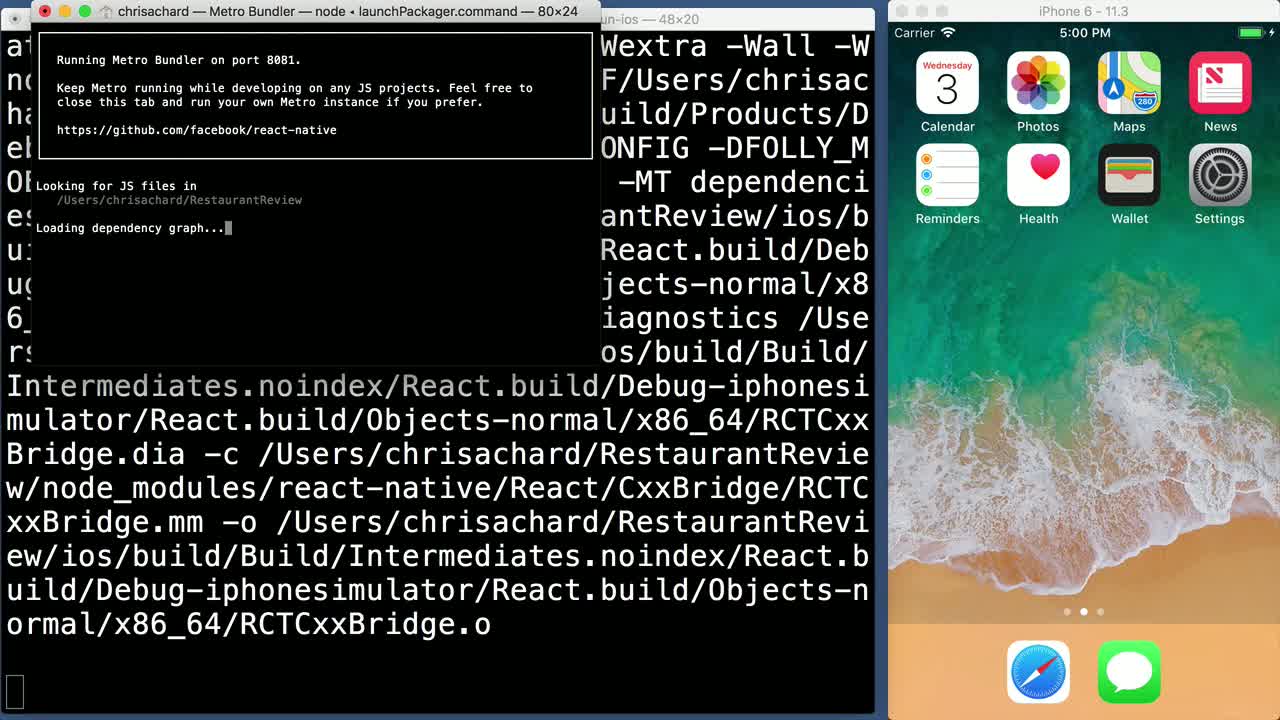

- #Mac emulator react native how to
- #Mac emulator react native for mac
- #Mac emulator react native mac os
First, we will learn how to install the framework, then check whether it works well and finally develop an app.PrerequisitesBasic computer proficiencyAn account with Administrative privileges on your computerAccess to the outlined documents and softwareA working internet connection to download the installation filesAudienceThis article guides first-time React Native users, junior developers, and developers with no experience with React Native. Its three main advantages are:It allows faster development due to its native natureThough it has a syntax styling similar to CSS or HTML, it is much quicker and efficientIt is flexible as it allows developers to write native code in various languages, including Java, Kotlin, and Swift.This article is about how to install and configure React Native CLI environment. React Native runs in the background of the destination device, and then communicates with the native platform via a batched asynchronous bridge. Microsoft also released a preview release in May 2020 that expanded the range of the React Native world, allowing desktop app development. Its native cross-platform capabilities allow usage for a wide range of platforms for application development, including Android, Web, Windows, UWP, tvOS, macOS, iOS, and AndroidTV. Facebook developed React Native from a need to generate UI elements efficiently, which formed the basis for creating the open-source web framework. You can make zsh the default in earlier versions of macOS as well.How To Install and Setup React Native on Mac By Rajesh Bhagia React Native Development Environment Installation:With the rapid growth of online websites, businesses, and the general ecosystem, it is crucial that website UIs load quickly on smartphones to encourage smartphone-based internet consumption. Starting with macOS Catalina, your Mac uses zsh as the default login shell and interactive shell. The error message is: React Native adb reverse ENOENT Running the Android App causes issues while launching the Emulator. Open the MyApp folder in VS Code to make further changes. I’m using the Android 10 emulator for Pixel XL. Install the Android Studio from here, which will install the Android SDK and the required emulator. It might be helpful to launch your simulator beforehand. This will install and launch the App in your iOS simulator. Open VS Code and open New Terminal and type the following command to create a new React-Native App: react-native init MyApp cd MyAppĬome back to the MyApp folder and run the below command to run your App in the iOS simulator: react-native run-ios You can check out this post for more details.Ĭreate the folder inside say your Documents folder on your Mac as below: mkdir Apps
#Mac emulator react native mac os
You might face issues on Mac OS Catalina to run VS Code due to Notarization requirements.
#Mac emulator react native for mac
Install Visual Studio Code for Mac from here. This requires you to enter system password. brew install watchmanĬocoapods: This is the Dependency Manager for iOS & Mac projects. Watchman: In react-native, Watchman watches the source code for any changes and rebuilds them. The recommended way to install Node is using Homebrew from your Terminal: brew install node Install the following dependencies for React-Native:

I’m working on MacOS Catalina and I already have Xcode 11 installed on my machine which is one of the pre-requisites to run the iOS App. The very first step to start development in React-Native is to install the right tools to setup the environment correctly.


 0 kommentar(er)
0 kommentar(er)
